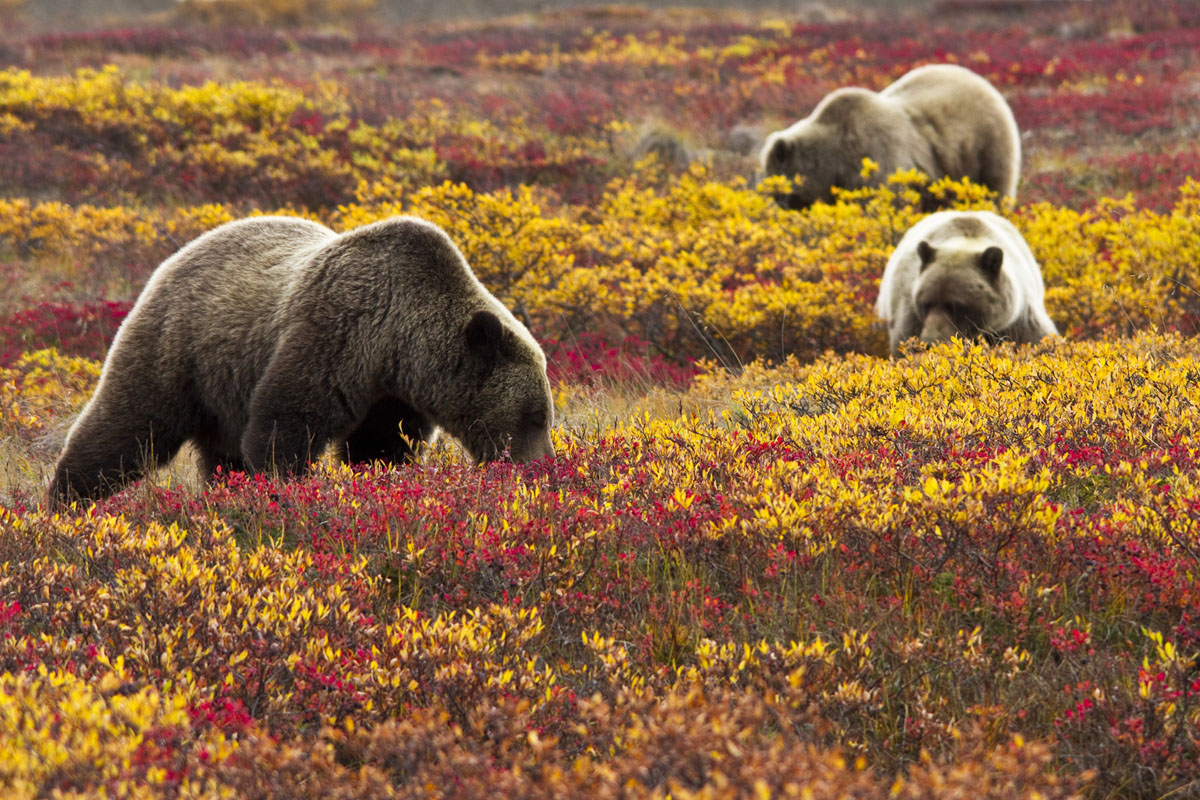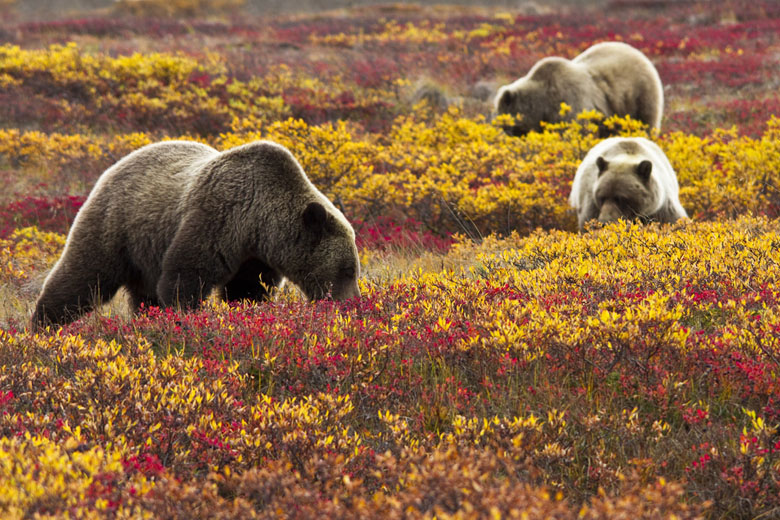

No place on Earth is bigger or wilder than the state of Alaska. For scale, 70 percent of America’s national park land and 85 percent of its wildlife refuge acreage lies within the state’s borders. Wrangell–St. Elias National Park, not even among the most well known of Alaska’s natural areas, is six times larger than Yellowstone National Park and covers more land than the country of Switzerland. Denali National Park is less than half the size of Wrangell-St. Elias but still larger than the state of Massachusetts.
Despite its grand size, Alaska shouldn’t feel unapproachable. To start, the Kenai Peninsula south of Anchorage offers quintessential Alaska wilderness, the scenic Seward Highway, a range of hiking trails, boat trips on the Kenai Fjords, fishing for halibut and salmon, and the likeable towns of Seward and Homer. Denali National Park is a must-see for many visitors, offering a range of options from tour buses on Park Road to serious backcountry trips. Juneau, reachable only via boat or plane, is as easy and beautiful as anywhere in the state, with the Mendenhall Glacier and Tongass National Forest nearby.
For those seeking out serious backcountry, the lesser-visited parts of Alaska beckon. Katmai and Lake Clark National Parks in the southwest part of the state offer pristine wilderness (and scores of grizzly bears). The aforementioned Wrangell–St. Elias National Park in Alaska’s eastern interior is a veritable playground for backcountry adventure. And some of the state’s most dramatic and stark landscapes can be found in the Arctic region, including Gates of the Arctic National Park and the Arctic National Wildlife Refuge (ANWR).
Wherever you decide to visit in Alaska, it’s not a bad idea to hire a local guide. The weather is harsh and unpredictable, transportation and communication are limited, and predators can outnumber humans in remote areas. This does add some cost to the trip, but the state’s relatively high concentration of local outfitters loves the land and knows it best.